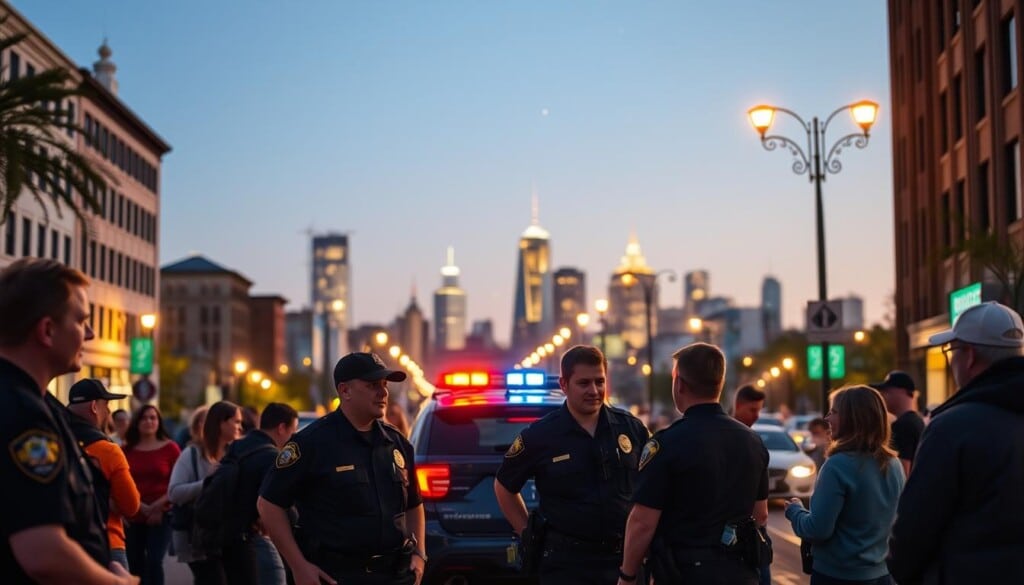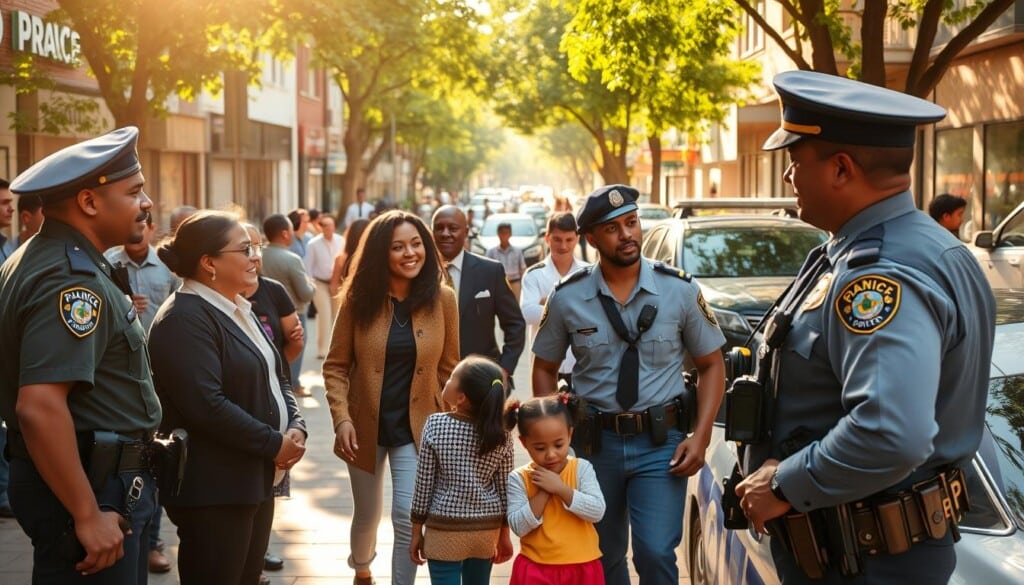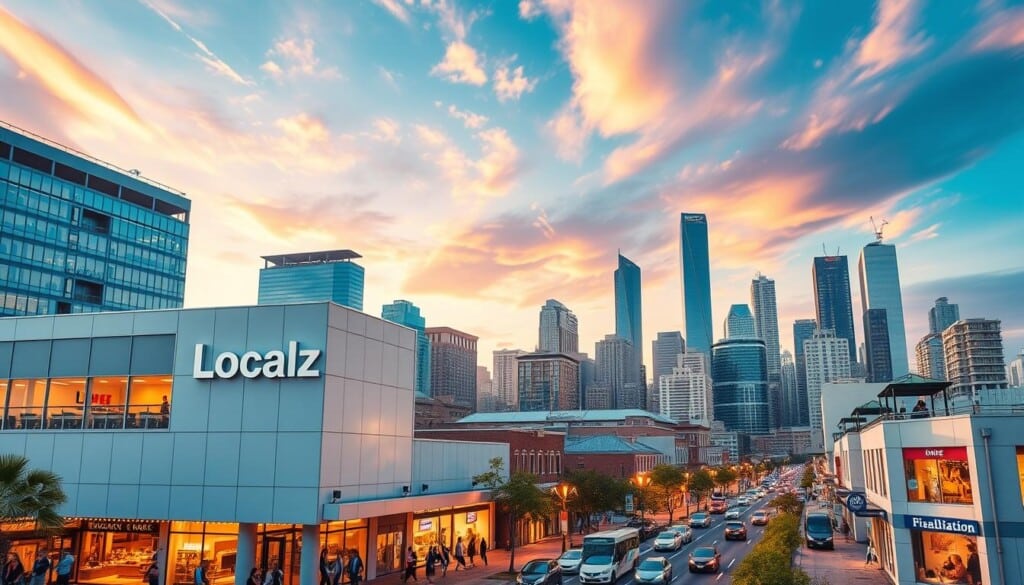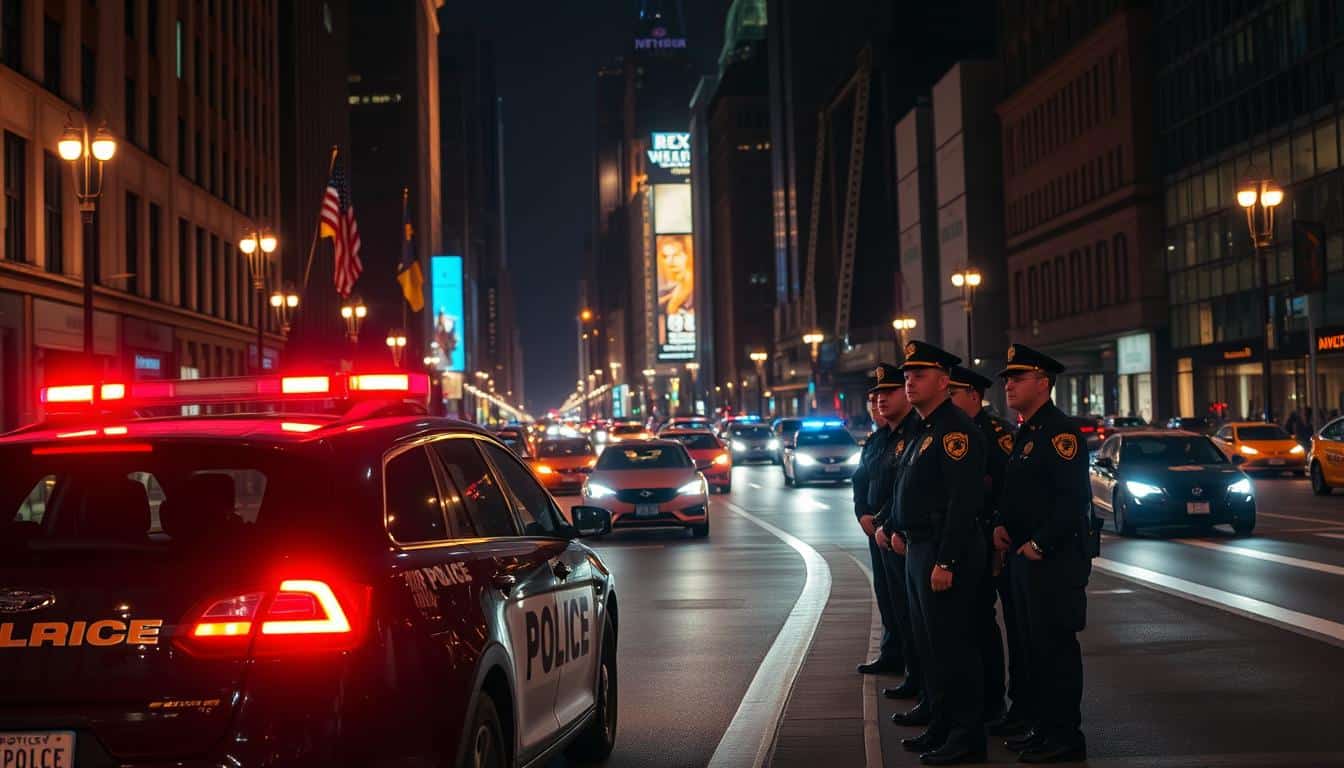Have you ever thought about how police departments balance community trust and safety? In the U.S., police are key to keeping the peace and making people feel secure. They include local, sheriff’s offices, and federal agencies.
These groups work hard to stop crime and build good relationships with the community. Their success depends on getting the right funding and engaging with people. This way, everyone feels safe and supported.
Key Takeaways
- Police departments are vital for keeping communities safe.
- The bond between law enforcement and residents is critical for good policing.
- Getting the right funding and support helps departments do their job better.
- Engaging with the community is key to building trust and safety.
- Police strategies to prevent crime are important for reducing incidents.
- Good communication between police and residents helps improve safety efforts.
The Role of Police Departments in Communities
Police departments are key to keeping communities safe and stable. They do more than just handle emergencies. They help keep the peace, meet community needs, and fight crime.
Maintaining Law and Order
Keeping the law is a main job for police. Officers handle incidents, investigate, and catch criminals. This makes people feel safe and encourages them to get involved in their community.
Community Engagement Efforts
Working with the community is vital for police. They use community policing to team up with locals. Programs like neighborhood watches and public meetings help build trust and address concerns.
Crime Prevention Strategies
Police focus on teaching and working with the community to prevent crime. Officers work with people to solve local problems. Programs for youth, crime awareness, and safety training help everyone feel responsible for safety.
How LocalZ Enhances Engagement with Police Departments
LocalZ is changing how people talk to police, focusing on police engagement and openness. It gives people easy access to info about local law enforcement. This helps start conversations and builds trust.
It’s key to have a public that knows what’s going on and helps keep everyone safe.
Connecting Residents with Local Law Enforcement
The LocalZ platform is a big help for people and police. It makes it easy to find police stations and get in touch. This makes people more likely to join in on safety efforts and talk about community issues.
It helps create a better working relationship between police and the people they serve.
Promoting Transparency through Listings
LocalZ makes sure everyone knows what’s going on with law enforcement. It lists all the important info, like contact numbers and police programs. This keeps the community informed and builds trust in the police.

Finding Your Local Police Department with LocalZ
Finding the nearest police department is easy with LocalZ. It’s a great tool for quickly finding police department resources. The LocalZ search lets you find your local police precinct by different criteria.
Search Features Explained
LocalZ has a simple interface for easy use. You can enter your location to find the nearest police station. Or, you can look for specific services, like emergency help or administrative tasks.
Filtering Options for Better Results
LocalZ also has filters to make your search better. You can refine your search to get the exact information you need. This makes it easy to connect with your police department, keeping everyone safe.
The Importance of Community Trust in Police Departments
Community trust is key for police departments to work well. It’s the base of good police-community relations and keeps everyone safe. By working together, police and residents can build trust and understanding.

Police officers need to keep working on building relationships with the community. Going to local events and talking at forums helps them be seen and heard. When people see officers in their area, it makes everyone feel safer and more connected.
Good communication is also vital for police to connect with the community. Police need to make sure people can talk to them without fear. By sharing how they work and what they do, police can earn the community’s trust and improve relations.
Exploring the Diversity of Police Departments Across the U.S.
Police departments across the U.S. face different challenges. Urban police deal with big crowds and more crime. They need more resources and skills. Rural police, on the other hand, have fewer resources and focus on building trust with the community.
Urban vs. Rural Departments
Urban police handle complex issues with diverse populations. They must consider many community views and cultural differences. Rural police, with fewer crimes, focus on community trust and a simpler policing style.
This shows how different environments require different ways to keep people safe.
Specialized Units Within Police Departments
In the U.S., many police departments have special units. These include cybercrime, narcotics, and community outreach teams. These units bring together experts to tackle specific crimes.
Each unit is key to creating effective law enforcement strategies. This shows the need for flexibility in different situations.
LocalZ: A Platform Supporting Local Businesses and Services
LocalZ is a key platform that connects residents with local businesses. It helps build a strong community. By supporting local businesses, it boosts the local economy.
It lets people find and support local services. This helps keep the economy strong.
Boosting Local Economies
LocalZ helps local economies grow by listing services. It encourages people to shop locally. This creates a cycle of spending that strengthens the community.
It helps create jobs and makes the economy more resilient.
Empowering Community Affiliates
LocalZ shows the value of community services. It features organizations that help citizens. It also gives 50% of its fees to local organizations.
This support helps these organizations grow. It makes the community stronger and more engaged.

How LocalZ Helps You Find Essential Services
Finding reliable services can be tough. LocalZ makes it easier by letting users find what they need quickly. It covers everything from emergency contacts like police and hospitals to non-urgent services like plumbing or dining.
From Emergency Contacts to Non-Emergency Needs
LocalZ lets people find important info fast. Users can look through different categories to find emergency contacts. This makes it easy to find what you need, helping build community ties.
Booking Services Directly Online
With LocalZ, booking services is a breeze. Just a few clicks and you’re set. It’s great for urgent repairs or regular visits. This makes managing your needs easy and strengthens community bonds.
The Impact of Local Businesses on Community Safety
Local businesses play a big role in keeping communities safe. They work with police to prevent crime and make sure everyone feels secure. Together, they help make safety efforts stronger and more effective.
Partnering with Police Departments
When local businesses team up with police, they become more involved in safety. They help launch programs to stop crime. This teamwork builds trust and unity, making the community safer for all.
Local Businesses as Crime Watch Partners
Local businesses are key in sharing important safety news. They help spread out tips from the police. This way, they help everyone work together to keep the community safe.
The Future of Policing and Community Interaction
The world of law enforcement is changing fast. It’s all about new technology and better ways to work with the community. Agencies are using tools like predictive analytics and body-worn cameras. This makes their work more efficient and fair.
Law enforcement is working hard to connect with the community. Social media is a big help. It lets them share news, listen to feedback, and keep everyone informed.
Using social media helps keep communities safe. It’s a way for police and people to talk to each other. This helps everyone stay informed and work together on safety issues.
If you want to help your local police, there are ways to do it. Programs like LocalZ help strengthen the bond between police and community. It’s a great way to support your local officers.
Joining LocalZ: A Win-Win for Businesses and Communities
Signing up with LocalZ brings many benefits for businesses and the community. It helps local businesses get noticed by more people. This makes it easier for them to find new customers.
When businesses list their services, they help the local economy grow. They show what they offer and help the community.
The Benefits of Listing with LocalZ
Joining LocalZ helps businesses stand out in their area. They get more people to see their listings. This leads to more customers and more business.
LocalZ focuses on helping the community. This means businesses help the area grow. They attract more people and support local projects.
Supporting Local Organizations Through Fees
LocalZ’s way of making money helps both businesses and local groups. A part of the money goes to support community programs. This helps the community and strengthens the bond between businesses and residents.

